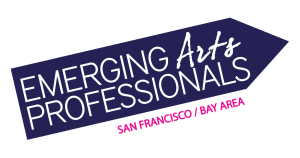TODAY
The landscape of cultural policy is a constantly shifting one. Not unlike the rapidly changing face of our planet we can similarly see changes in cultural policy by looking at both larger national / global policy as well as by examining more intimate local policy as it relates to specific communities. While the phrase “think globally, act locally” is somewhat tired and overused, it still holds relevance to an approach towards enhancing a community’s ability to celebrate who they are – one of the cornerstones of cultural policy. Due to factors including, but not limited to, the economic downturn, the housing crisis, and state / local / national governments feeling budgetary constrictions, it is easy to lose any semblance of a thoughtful process in examining the direction that cultural policy is headed. In many ways these factors, these seemingly uncontrollable forces, shape and shift any attempt towards enacting cultural policy both on the national / global scale as well as in our own backyards.
Currently art and government organizations are trying to stay alive. They are trying to meet a varied and diverse constituency with limited resources. Painting with a broad brush, many organizations operate in a manner in which the policy and decision making is far removed from the day-to-day aspects of programming. Cultural policy cannot separate itself from issues of immigration policy, social justice, human rights, and equity. It is ideally a celebration of diversity, a celebration of sameness and difference. And yet cultural policy is very much under attack by a jingoistic backlash in this country (best witnessed by the Tea Party Movement) that seeks to homogenize and polarize.
##
 Sanjit Sethi is Director of the Center for Art and Public Life, and the Barclay Simpson Chair of Community Art at California College of the Arts. Sethi received a BFA in 1994 from the New York State College of Ceramics at Alfred University, an MFA in 1998 from the University of Georgia, and an MS in Advanced Visual Studies in 2002 from the Massachusetts Institute of Technology. Sethi has been an artist in residence at the Banff Centre in Alberta, Canada and a Fulbright fellow in Bangalore, India, working on the Building Nomads Project. Sethi continued his strong focus on interdisciplinary collaboration as director of the MFA program at the Memphis College of Art. His work deals with issues of nomadism, identity, the residue of labor, and memory. Sethi recently completed the Kuni Wada Bakery Remembrance, an olfactory-based memorial in Memphis, Tennessee; and Richmond Voting Stories, a collaborative video project involving youth and senior residents of Richmond, CA. Sethi’s current works include Indians/Indians, the Urban Defibrillator, and a series of writings on the territory of failure and its relationship to collaborative cultural practice, all of which involve varied social and geographic communities.
Sanjit Sethi is Director of the Center for Art and Public Life, and the Barclay Simpson Chair of Community Art at California College of the Arts. Sethi received a BFA in 1994 from the New York State College of Ceramics at Alfred University, an MFA in 1998 from the University of Georgia, and an MS in Advanced Visual Studies in 2002 from the Massachusetts Institute of Technology. Sethi has been an artist in residence at the Banff Centre in Alberta, Canada and a Fulbright fellow in Bangalore, India, working on the Building Nomads Project. Sethi continued his strong focus on interdisciplinary collaboration as director of the MFA program at the Memphis College of Art. His work deals with issues of nomadism, identity, the residue of labor, and memory. Sethi recently completed the Kuni Wada Bakery Remembrance, an olfactory-based memorial in Memphis, Tennessee; and Richmond Voting Stories, a collaborative video project involving youth and senior residents of Richmond, CA. Sethi’s current works include Indians/Indians, the Urban Defibrillator, and a series of writings on the territory of failure and its relationship to collaborative cultural practice, all of which involve varied social and geographic communities.
Don’t miss Reframing the Arts : Advocating for the Public Culture at Oakland Museum of California (OMCA)
on Saturday, April 16! Register here.









